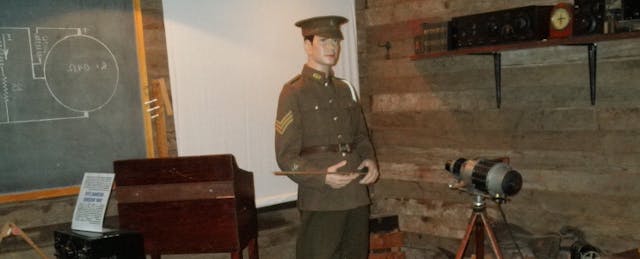When the military draft ended, the U.S. Army found that its volunteers were largely high school dropouts and high school graduates with poor academic records. But the Army needed an increasing percentage of highly skilled soldiers to use and maintain computers, radars, missiles and other high tech equipment. They had already tried videotaping their best instructors without any measurable improvement in outcomes. Faced with this real barrier to defending the country, the Army went looking for a new solution.
The solution they decided to test was what we now call the “flipped classroom”. After initial successes, the Army opened 1125 learning centers in every combat arms battalion worldwide. They also converted Advanced Individual Training schools to the flipped model. The result was the army was able to train over 500,000 soldiers for highly technical jobs with 85% reaching A-level competence in 40% less time than the prior conventional courses. My company --the lead contractor in that Training Extension Course Program-- was subsequently successful in using the same approach in hundreds of high schools to help over 90% of teenage students in improving grades and increasing motivation toward school and education.
My purpose here is to share what we did that worked. In a companion article, I’ll tell you about our experiences in using this approach with thousands of high school students from hundreds of high schools.
The key ingredients of the flipped classroom are:
- The students learn by doing in class—memorizing, drilling with questions or flashcards, solving problems and writing essays and papers.
- The teacher’s principal activity in class is to help individual students, one at a time, mostly when asked by the student.
- Each student progresses from one lesson to the next only after demonstrating competence of the current lesson.
In the Army’s use of flipped classes, the content was delivered by printed books and audio-visual presentations. Each student could view or review the books and tapes as they chose, and then turn their attention to graduated exercises leading to the expected competence. Students generally spent more time on the exercises than the books and tapes, roughly corresponding to the college format of 2 or 3 hours of individual activity for each hour in lecture.
Today's flipped classroom dictates that students watch lessons at home in order to increase classroom time for practice and intervention. Note that in the Army’s learning centers the soldiers watched lessons in the classroom rather than at home. Watching videos at home rather than in class would have created additional learning barriers for soldiers: 1) It left a time gap between when they finished a lesson and were ready for the next, and 2) it required that they have viewing devices at home. This allowed soldiers to finish one lesson and start the next at any time during the school day.
Learning outcomes were scored on the basis of the percentage of soldiers certified as competent in performance tests. The lessons and courses addressed complex content, such as calibrating computer range finders, repairing the radars for anti-aircraft cannons, and performing trigonometric calculations for surveying and artillery.
The original, conventional courses were 10 to 12 weeks in length, and typically only 25% or less of graduates were rated as competent. The flipped classes allowed open entry (start any day) and exit upon certification, usually in 6 to 8 weeks.
This experience with the Army led to our developing programs that have served more than 400,000 high school and college students. In a companion article to follow, I will describe our experience with such issues as class size, grading, flipping only appropriate portions of the curriculum, and providing constructive activities for students who master courses before the end of a semester or quarter.


